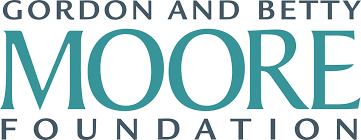
https://www.moore.org/article-detail?newsUrlName=catalyzing-invention-mo...
Launched in 2016, the Moore Inventor Fellows program set out to support 50 early-career academic inventors developing tools and technologies with the potential to make significant advances in science, environmental conservation, and patient care. The fellowship provided flexible funding for proof-of-concept development, entrepreneurial training, and visibility — helping fellows bridge the gap between research and pre-commercial innovation.
In 2024, the research firm Mathematica conducted an independent retrospective evaluation of the program’s first eight cohorts. Their study examined the fellowship’s design, implementation, and outcomes, drawing on surveys, interviews, focus groups, program records, and comparative analyses of fellows and finalists.
Mathematica’s evaluators found that the program’s flexible funding filled a persistent gap by supporting academic inventors at a critical career stage. Fellows were able to pursue high-risk ideas, pivot their work as needed, and strengthen their networks. Compared to runners-up in the Moore Inventor Fellow program competition, fellows reported greater confidence, advanced their inventions further against their expectations over the award period, and actively built teams to cultivate the next generation of inventors. Both fellows and finalists moved forward in their careers, secured additional funding, and achieved scientific and entrepreneurial milestones.
At the same time, the evaluation identified challenges. The program’s broader influence was difficult to measure as the fellowship did not have clear metrics or assessment systems built into its design. The fellowship’s reach remained concentrated among well-resourced institutions, and efforts to diversify participation yielded limited results. COVID-19 disruptions and foundation staffing changes also constrained program delivery and continuity.
Mathematica’s evaluation concluded that the fellowship provided distinctive and valuable support that enabled fellows to follow the science, take risks, and substantially contribute to the credibility of academic invention. Yet its modest scale and limited evaluation framework relative to the invention ecosystem as a whole made it difficult to draw causal claims or to demonstrate its system-level influence.
The foundation completed its objective of supporting 50 fellows to shape the next 50 years. The evaluation serves as a record of its contributions and as a resource for future efforts to support scientist inventors and other person-centered awards.
Download the executive summary of the Moore Inventor Fellows Final Evaluation Report to learn more about the impact and lessons of the fellowship.
Launched in 2016, the Moore Inventor Fellows program set out to support 50 early-career academic inventors developing tools and technologies with the potential to make significant advances in science, environmental conservation, and patient care. The fellowship provided flexible funding for proof-of-concept development, entrepreneurial training, and visibility — helping fellows bridge the gap between research and pre-commercial innovation.
In 2024, the research firm Mathematica conducted an independent retrospective evaluation of the program’s first eight cohorts. Their study examined the fellowship’s design, implementation, and outcomes, drawing on surveys, interviews, focus groups, program records, and comparative analyses of fellows and finalists.
Mathematica’s evaluators found that the program’s flexible funding filled a persistent gap by supporting academic inventors at a critical career stage. Fellows were able to pursue high-risk ideas, pivot their work as needed, and strengthen their networks. Compared to runners-up in the Moore Inventor Fellow program competition, fellows reported greater confidence, advanced their inventions further against their expectations over the award period, and actively built teams to cultivate the next generation of inventors. Both fellows and finalists moved forward in their careers, secured additional funding, and achieved scientific and entrepreneurial milestones.
At the same time, the evaluation identified challenges. The program’s broader influence was difficult to measure as the fellowship did not have clear metrics or assessment systems built into its design. The fellowship’s reach remained concentrated among well-resourced institutions, and efforts to diversify participation yielded limited results. COVID-19 disruptions and foundation staffing changes also constrained program delivery and continuity.
Mathematica’s evaluation concluded that the fellowship provided distinctive and valuable support that enabled fellows to follow the science, take risks, and substantially contribute to the credibility of academic invention. Yet its modest scale and limited evaluation framework relative to the invention ecosystem as a whole made it difficult to draw causal claims or to demonstrate its system-level influence.
The foundation completed its objective of supporting 50 fellows to shape the next 50 years. The evaluation serves as a record of its contributions and as a resource for future efforts to support scientist inventors and other person-centered awards.
Download the executive summary of the Moore Inventor Fellows Final Evaluation Report to learn more about the impact and lessons of the fellowship.









